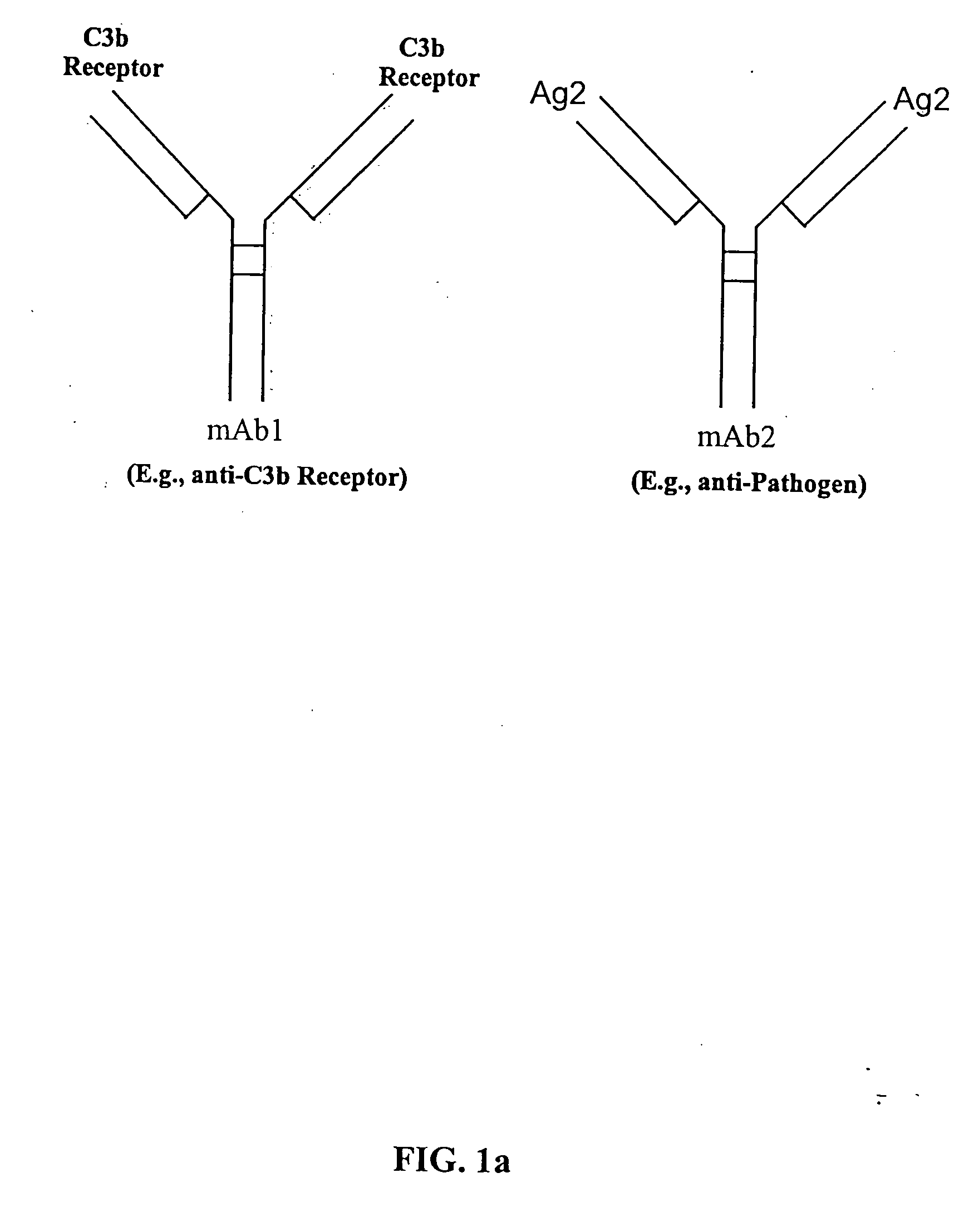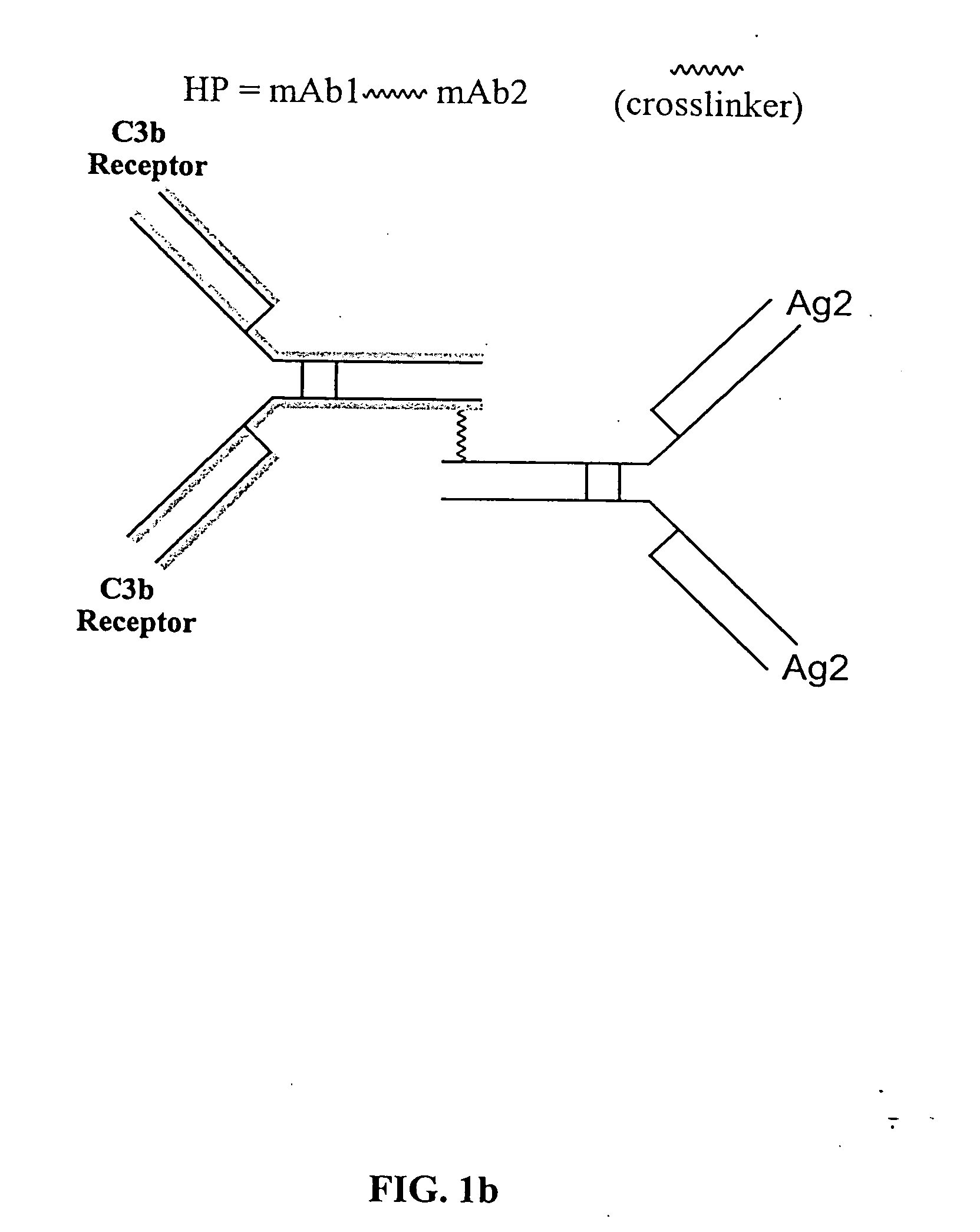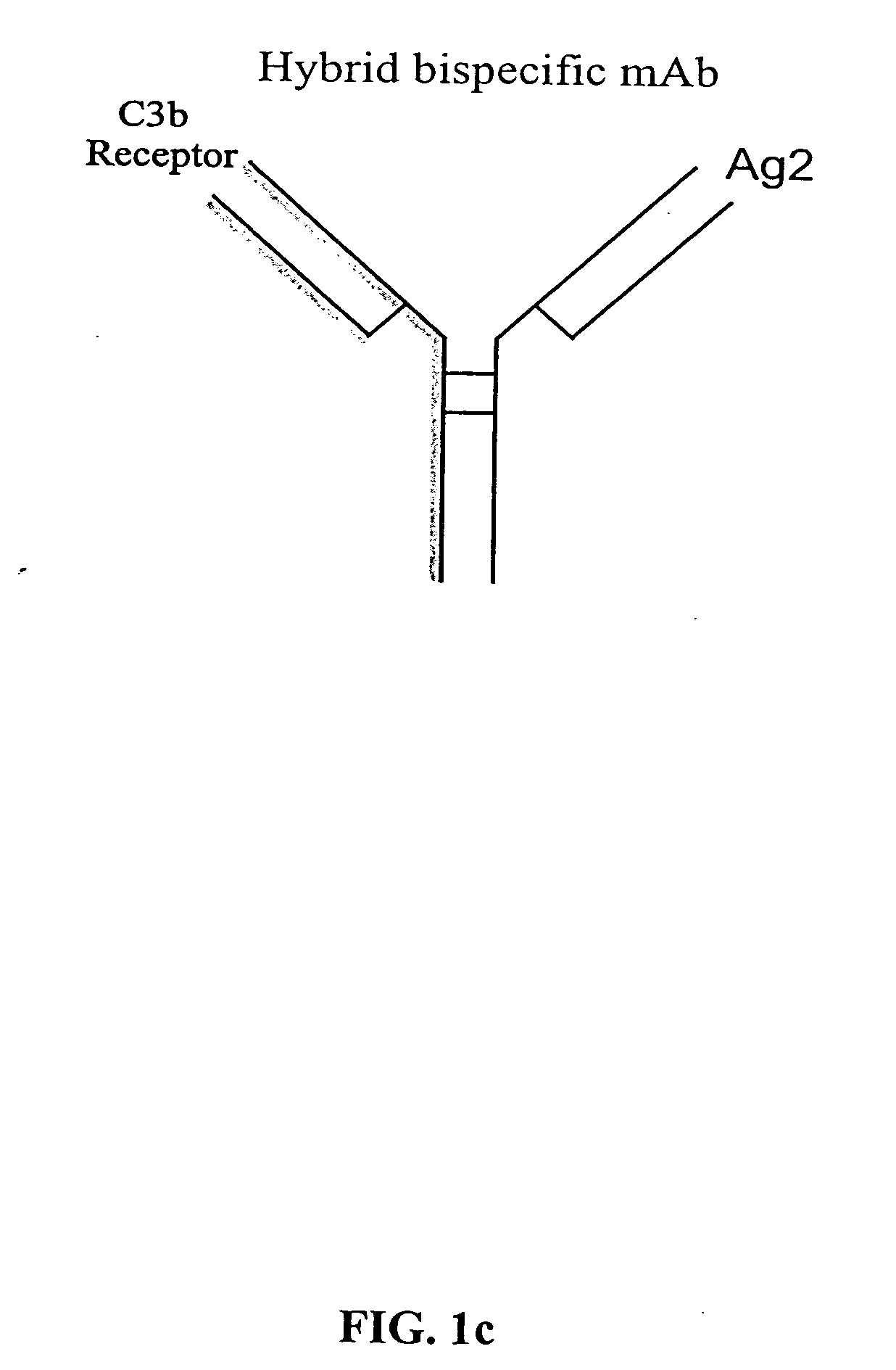Bispecific molecules and uses thereof
a technology of specific molecules and molecules, applied in the field of specific molecules, can solve the problems of traumatic and hypovolemic shock, insufficient antigen for rapid and efficient clearance of antigens, and enhanced delivery of target antigens to phagocytes for clearance by specific antibodies
- Summary
- Abstract
- Description
- Claims
- Application Information
AI Technical Summary
Benefits of technology
Problems solved by technology
Method used
Image
Examples
Embodiment Construction
[0043] The present invention relates to bispecific molecules, more particularly to bispecific antibodies, which are characterized by having a first antigen recognition region which binds an antigenic molecule to be cleared from a subject (a pathogenic antigenic molecule) and a second antigen recognition region which binds a C3b-like receptor or its functional equivalent. The C3b receptor is known as the complement receptor 1 (CR1) in primates or CD35. As used herein, the term C3b-like receptor is understood to mean any mammalian circulatory molecule which has an analogous function to a primate C3b receptor, for example CR1.
[0044] The bispecific molecules of the invention do not consist of a first monoclonal antibody to CR1 that has been chemically cross-linked to a second monoclonal antibody.
[0045] Extracellular chemical crosslinking of polypeptides has significant disadvantages. First, the chemical crosslinking process can denature polypeptides thus increasing the dose necessary fo...
PUM
| Property | Measurement | Unit |
|---|---|---|
| Fraction | aaaaa | aaaaa |
| Time | aaaaa | aaaaa |
| Composition | aaaaa | aaaaa |
Abstract
Description
Claims
Application Information
 Login to View More
Login to View More - R&D
- Intellectual Property
- Life Sciences
- Materials
- Tech Scout
- Unparalleled Data Quality
- Higher Quality Content
- 60% Fewer Hallucinations
Browse by: Latest US Patents, China's latest patents, Technical Efficacy Thesaurus, Application Domain, Technology Topic, Popular Technical Reports.
© 2025 PatSnap. All rights reserved.Legal|Privacy policy|Modern Slavery Act Transparency Statement|Sitemap|About US| Contact US: help@patsnap.com



